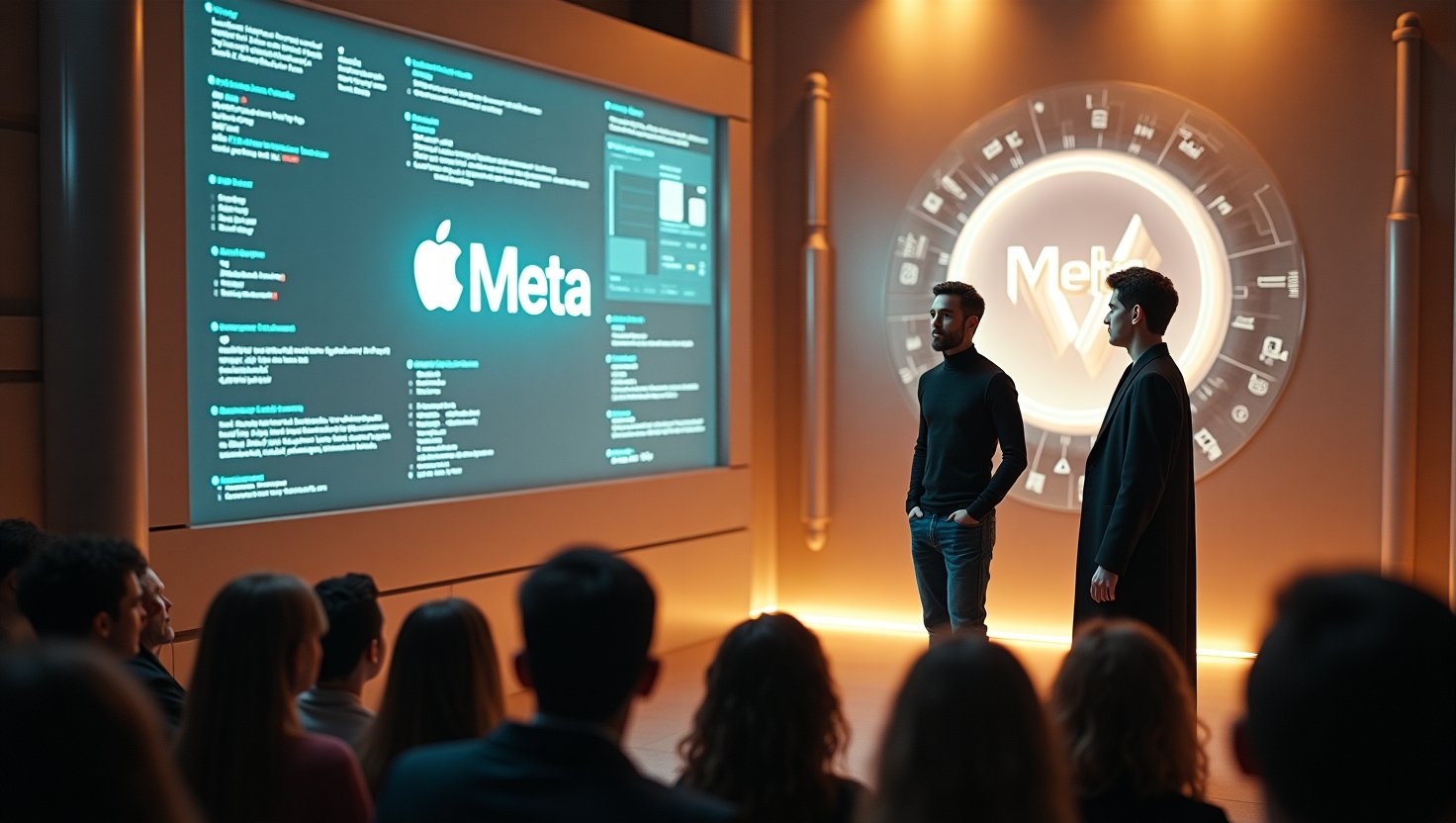The Rising Challenge of AI Leadership: Navigating Talent Acquisition at Apple and Meta
Introduction
In a digital age where artificial intelligence is the pulse of global innovation, AI leadership emerges as the battlefield where tech titans like Apple and Meta clash. At the heart of this clash lies a fierce skirmish for talent acquisition, a quest to harness the minds that will drive the next generation of AI technologies. As AI becomes increasingly woven into the fabric of society, the stakes are monumental. Not only for Apple and Meta, but for every company hoping to solidify its footing in a future governed by artificial intelligence. Understanding these dynamics is not just crucial—it’s imperative.
Background
In a move that reverberated through the tech ecosystem, Ruoming Pang’s departure from Apple to join Meta underscored a brewing storm in AI talent acquisition. Pang, a transformative figure in Apple’s AI ambitions, spearheaded projects with a team of 100 engineers source. His contributions were pivotal, shaping the way consumers interact with their devices through enhanced learning and intelligence systems. Yet, his exit marked a significant shift, pointing to the relentless competition between these tech giants and the depth of resources they are willing to deploy to secure AI supremacy.
Is Pang’s move an isolated incident or a signifier of a broader struggle for AI talent? Apple’s loss is Meta’s gain, highlighting the tactical challenges corporations face when leadership gaps threaten to stifle innovation. These challenges ripple beyond boardroom strategies, impacting the evolution of emergent technologies.
Current Trends in AI Leadership
The AI arms race is on, with companies upping their ante exponentially. Meta’s jaw-dropping $14.3 billion investment in Scale AI speaks volumes about the lengths companies will go to assert dominance source. This is a clear indication that we’re heading into another Gold Rush, a modern scramble not for glittering nuggets but for the brilliance of human intellect.
Such colossal monetary commitments raise critical questions about talent acquisition strategies. Companies like Meta and Apple aren’t merely competing for technologies but are reconfiguring leadership structures to adapt. As they do, the effects are felt worldwide, transforming industries and challenging competitors to either innovate or become obsolete.
Insights on AI Talent Acquisition
The departure of leaders like Pang from companies and his subsequent arrival at rivals isn’t merely an HR hiccup—it’s a seismic shift. These moves can dramatically disrupt ongoing projects and, more concerningly, the broader innovation strategies of tech behemoths. With leadership attrition, some innovations may stutter or stumble, allowing competitors to seize the baton. Tom Gunter, an AI industry expert, aptly compares these shifts to a chess game. When a king’s position becomes compromised, entire strategies must realign, breaking former paths and venturing into uncertain territories.
Industry pundits repeatedly ring the alarm on the existential threat that losing top talent represents. Meta has honed a strategy of aggressive acquisition, whereas Apple faces the daunting task of reevaluating retention methods, embodying the broader strategic conundrum faced by others.
Future Forecast for AI Companies
Will future AI leadership look like a game of musical chairs or a tightly-knit coalition of dedicated visionaries? As Apple and Meta vie for dominance, this talent tug-of-war portends a new age: one of fluid, dynamic leadership landscapes. If current trends sustain, AI giants may lean towards forming innovative partnerships or crafting global alliances to bolster their talent arsenals, integrating diverse mindsets and fostering unprecedented advances.
But what happens when the talent pool becomes shallow? How does this impact AI’s role in solving global challenges, from climate change to smart city developments? As AI companies grapple with these questions, they must anticipate an environment where technology reinvents itself at breakneck speeds, necessitating novel leadership approaches and unparalleled adaptability.
Conclusion and Call to Action
AI companies stand at a crossroads. With leadership challenges not set to ease, only those agile enough to adapt will thrive. The ongoing skirmish in AI leadership underscores a pivotal truth: the trailblazers of tomorrow are those who master the art of talent acquisition today. It’s an issue not just for corporate titans but for all stakeholders in the tech ecosystem. As we look to the horizon, the invitation is clear: stay informed, engage with the global dialogue, and become part of the solution in these unfolding narratives.
Related Articles
– Apple Receives a Major Blow in AI Leadership with Departure of Ruoming Pang to Meta – This article outlines the landscape of competition and strategic challenges, shedding light on Apple’s loss and Meta’s gains.
Embrace the conversation—AI leadership is neither an isolated incident nor a mere corporate concern. It’s a developing story impacting global innovation, and your insights can help shape its trajectory.

